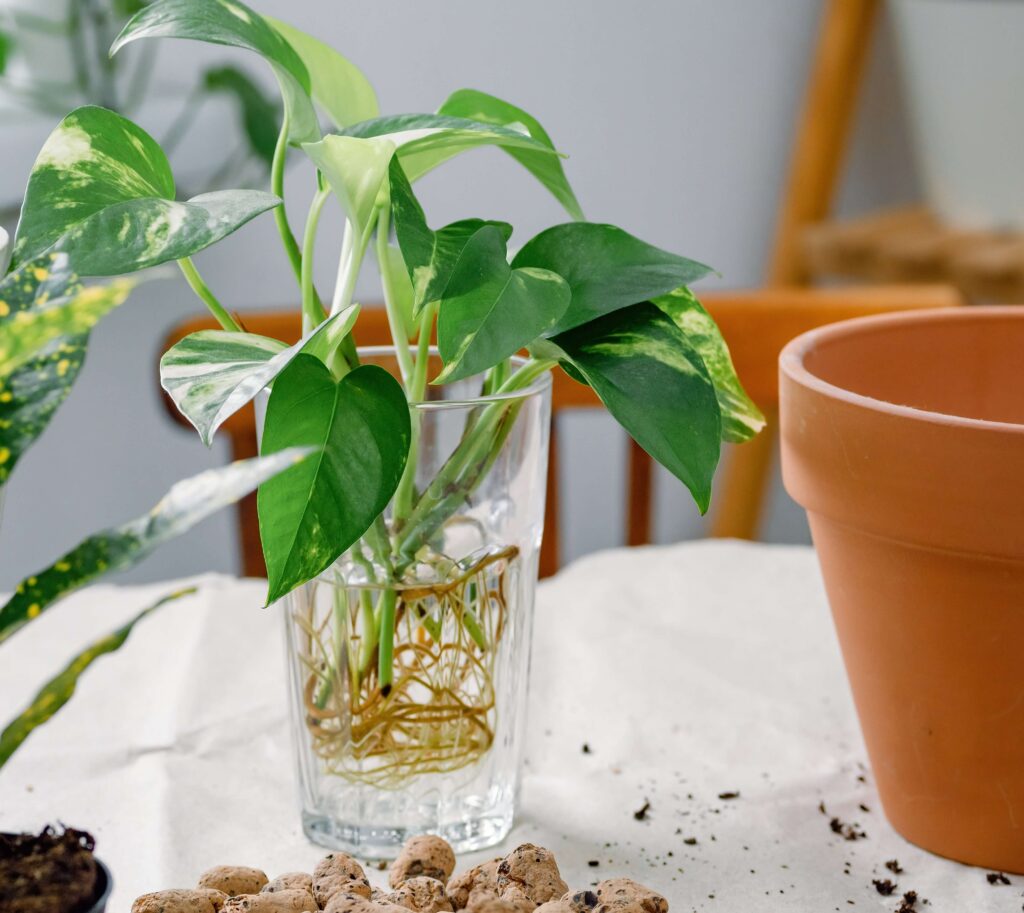Ecology of the Pothos Plant: Understanding Its Role and Life in Nature.

Pothos Pothos Plant ( Epipremnum aureum is among the most loved home plants across throughout the globe. The lush green leaves with heart-shaped leaves, as well as the ability to flourish without much maintenance makes it a favorite option for indoor gardens. But, aside from its appeal as a plant for the home and a garden plant, the ecological aspect that is Pothos is fascinating. Pothos plants is fascinating. Understanding its natural habitat, characteristics of growth along with environmental adaptations and its ecological significance can help us a greater appreciation of this plant.In the following article we’ll examine the ecological aspects that is this Pothos plant as well as its contribution to its natural ecosystem, its adaptations to environmental conditions and interactions with humans as well as the surroundings.
Habitat and Distribution of the Pothos Plant
Pothos plant is indigenous in the forests of the tropical rain forest Southeast Asia and the Solomon Islands which is humid and hot climates. It develops like an epiphytic vine as well as climbing trees and other surfaces with its aerial roots. The roots of the plant help it to absorb nutrients and moisture in the atmosphere and surroundings.
Global Presence.
While the Pothos plant is a tropical plant, it has been widely grown and naturalized throughout many regions of the globe. It is typically found in subtropical and tropical areas which includes regions in Africa, Australia, and the Americas. In some regions such as Hawaii as well as Florida it has been declared an invasive species, and its rapid growth has outpaced native plants and alters the local ecosystems.
Growth Characteristics of the Pothos Plant.
Pothos Pothos plant is famous for its flexibility and distinctive pattern of growth, which allows it to flourish in a variety of situations.
Growth Form
In its natural habitat In its natural environment, the Pothos displays the trailing and climbing behaviors. It makes use of the root system to connect to trees, and to grow upward towards the light. In the indoor environment, it’s often planted as a trailing plant in hanging baskets where the vines will be swathed in beautiful cascades.
Leaf Morphology.
The leaves of the Pothos plant vary depending on their growth stage and environment:
- Juvenile Stage: The leaves are small, heart-shaped, and smooth, typical of indoor plants.
- Mature Stage: In outdoor or natural settings, the leaves grow much larger and may develop fenestrations (splits or holes), similar to those seen in Monstera plants.
Root System.
The Pothos plant has two types of roots:
- Aerial Roots: he roots aid the plant to climb up and draw water from the air within its natural habitat.
- Terrestrial Roots: If they are planted in soil its roots in the terrestrial soil absorb nutrients and water.
Environmental Adaptations of the Pothos Plant
The Pothos plant is very adaptable, which is the reason for its rise as an indoor plant, and as an invading plant in certain regions.
Light Tolerance.
One of the reasons it is that the Pothos Plant is so well-known is the fact that it thrives in a variety of lighting conditions. It thrives in dim lighting making it suitable for indoor environments, but it is a thriving plant in direct sunlight which is warm and bright. It is recommended to stay clear of direct sunlight because it could cause burning to the leaves.
Water Requirements.
There is a belief that Pothos species are drought-tolerant which means they can endure long intervals of intermittent watering. It likes to be within soils that are moist, yet not excessively wet. If it is overwatered it could result in root decay, and it is crucial to maintain an appropriate drainage.
Temperature and Humidity
A tropical plant, it Pothos flourishes at temperatures ranging from 65 to 85 degrees (18-29degC). It likes humidity that is high but is able to adapt to lower levels of humidity in the indoor environment. A few mists could help recreate its natural surroundings and help keep the leaves healthy.
Climbing Mechanism.
In its native environment in the wild, the Pothos plant makes use of the root system to climb over trees and other surfaces to search for sunlight. The climbing habit is a natural adaptation that lets the plant be competitive in the tropical rainforest.
Role in the Ecosystem.
Pothos is a Pothos plant plays an important part in the native ecosystem which contributes to biodiversity and helping to support life in a variety of ways.
Air Quality and Gas Exchange
Like all plants, Pothos is a plant that absorbs carbon dioxide and generates oxygen by photosynthesis. In its natural habitat, this process is a contributor to the balance of the gases in the forest ecosystem. When it is indoors, Pothos is renowned for its ability to purify the air that eliminate toxins such as formaldehyde, benzene as well as anxylene out of the atmosphere.
Biodiversity Support.
In the wild in the wild, the Pothos is a natural habitat for small and invertebrate species as well as insects. The leaves and vines be used as shelters, and its climbing habits help it to be a part of the forest’s diverse plant community.
Human interactions in Pothos Plant.
The Pothos plant is now an integral component of human daily life, specifically as houseplants. Its flexibility and beauty are the main reasons to choose it for indoor décor.
Indoor Popularity
The Pothos is among the most popular houseplants around. Its long, trailing branches along with its hearts-shaped leaves are a gorgeous design for offices and homes. It’s also highly appreciated because of its low maintenance requirements for care and its low maintenance requirements, which makes it perfect for both novices and avid people who love plants.
Air Purification.
Studies have proven that studies have shown that the Pothos plant is able to effectively filter indoor air, getting rid of toxic toxins and enhancing the quality of air. This makes it an excellent choice to create an environment that is healthier for indoors.
Cultural Significance.
In some societies, in some cultures, the Pothos plant is believed to be to be a symbol of luck and prosperity. It is usually given as a present to help bring positivity and increase the growth of homes and businesses.
Environmental Concerns.
Although the Pothos is hailed as a plant for the home but it is a problem in areas in which it has grown to become an invasive species. The rapid growth of the plant can choke native vegetation and cause disruption to the local ecosystems. A proper management strategy is essential to avoid ecological damage in these zones.
Reproductive Ecology of the Pothos Plant.
The Pothos plant reproduces most often by vegetative growth which is the process of growing new plants using stem cuttings. This technique is easy and efficient, which makes it the most popular method to grow the plant.
Rare Flowering
In its natural environment in the wild, the Pothos plant may bloom and also produces seeds. However, flowering is not common when it is in the garden, particularly indoors.
The Pothos is incredibly easy to propagate:
- Take a stem cutting just below a leaf node.
- Place the cutting in water or moist soil.
- Wait for roots to develop before planting it in soil.
This process allows the plant to spread easily, both in cultivation and in the wild.
Threats and Challenges.
While Pothos is a Pothos plant is tough and durable, it is also prone to some issues:
- The cold sensitivity The plant can’t take extreme cold or frost.
- Root Rot Overwatering may result in root rot, which is a frequent problem in the cultivation.
- Uncontrollable Behaviour In non-native areas, the Pothos can spread in uncontrolled ways, which can threaten local biodiversity.
Conclusion
The ecology of the Pothos plant shows its amazing flexibility and adaptability. From its earliest days from the lush tropical forests of Southeast Asia to its role as a world-wide houseplant the Pothos has flourished in a myriad of settings. The ability of the plant to purify the air, improve interior aesthetics, and adjust to changing circumstances makes it an excellent plant that is suitable for living ecosystems and natural spaces. However just like every plant, it is important to be aware of its ecological effects particularly in areas that have become invading. When we understand its Pothos plant’s ecological value and taking good maintenance of the plant, we are able to take pleasure in its beauty and benefits and minimize the potential harm it could cause to the ecosystem.

Hi! My name is imran a dedicated gardener and lover of plants determined to bring the pleasure of gardening to everyone. With over a decade of knowledge, I’ve studied a range of questions that range from organic gardening techniques to the latest advancements in the area that concerns house plants. The site is an most reliable source to start your own private garden, regardless of the level of expertise you have. Join me in celebrating natural beauty and the art of gardening form!
